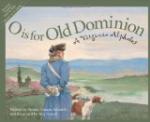Across the James from Weyanoke lies Fleur de Hundred. One day, with a daughter and a son of the Weyanoke household aboard, we sailed over to visit the old plantation. We knew that we should find nothing in the way of plantation life there, as the estate has long lain idle; and we knew also that no mark was left on the broad acres to tell of the life of colonial days. But the broad acres themselves were there, and they would remember the old times no doubt; and perhaps, lying in the sunshine and with nothing in the world to do, they might tell us things.
We knew somewhat about Fleur de Hundred ourselves. In 1618 Sir George Yeardley, governor of the colony (the same who owned Weyanoke), patented these lands and gave them the name that has scarcely been spelled twice alike since. Sir George sold the plantation to Captain Abraham Piersey.
We sought to trace the successive owners on beyond Abraham; but they married and died at such a rate that we got lost in the confusion somewhere between the altar and the tomb, and gave the matter up. Two well established customs among the early colonists seem to have been to die early and to marry often. Perhaps they usually reversed the order; but, at any rate, dying in middle age after having married “thirdly” or “fifthly”—yes, even “sixthly”—makes top-heavy family trees and puzzling lines of descent.
In this instance, we were quite content to skip to the opening of the nineteenth century when Fleur de Hundred became the property of John V. Willcox, in whose descendants it has ever since remained.
Landing upon a pebbly beach beside the ruins of a pier, we took a long walk inland to the present-day home. While historic Fleur de Hundred is now allowed to lie idle, its plantation life all gone, yet its home life continues and the old-time hospitality remains, as we found in that afternoon visit. And when we set our faces toward Gadabout again, Nautica had roses and lavender and violets from an old garden that refused to stop blooming with the rest of the plantation, and the Commodore treasured a rare pamphlet upon early Virginia that only Virginia courtesy would have entrusted to a stranger.
Through the quiet of the sleeping plantation, we took our way toward the river. Some bees had found late sweetness along the overgrown roadway. The air was still and sweet with the scent of sun-drying herbs. A lagging sail was on old Powhatan. About us on every hand lay the historic soil of Fleur de Hundred. We wondered where the manor-house had stood in those early colonial days when Sir George Yeardley, the governor, made his home here, with many indented servants and half the negroes in the colony to serve him; and where had been the several dwellings and store-houses, stoutly palisaded, that had formed quite a village for his day.
[Illustration: Present-day Fleur de hundred.]
It is not recorded that the Governor was a great smoker, but he was an enthusiastic grower of tobacco and may almost be said to have been the father of the industry. Doubtless, in his time, most of these fertile acres were covered with the strange weed that the Englishmen had got from the village gardens of the red man.




